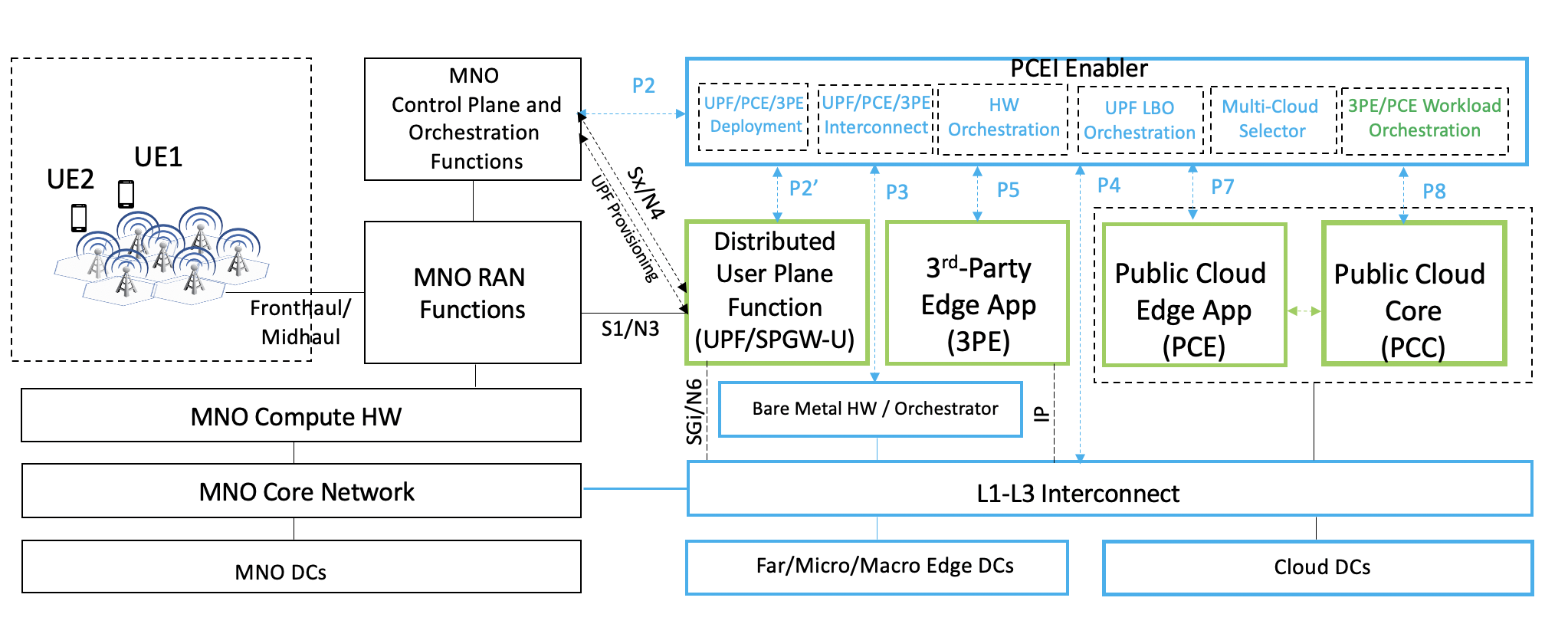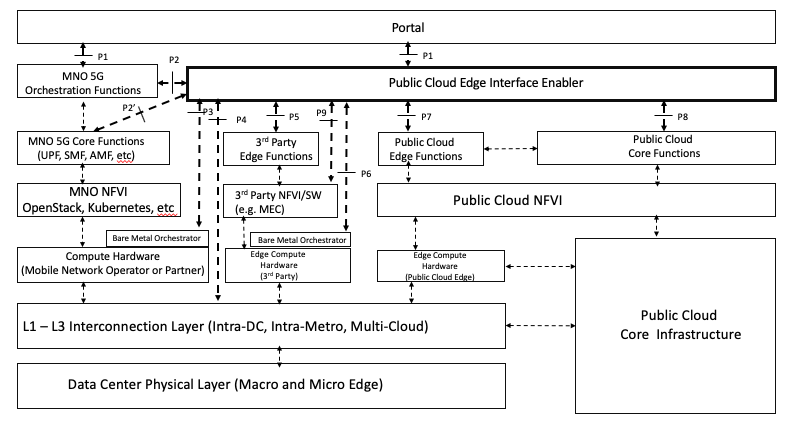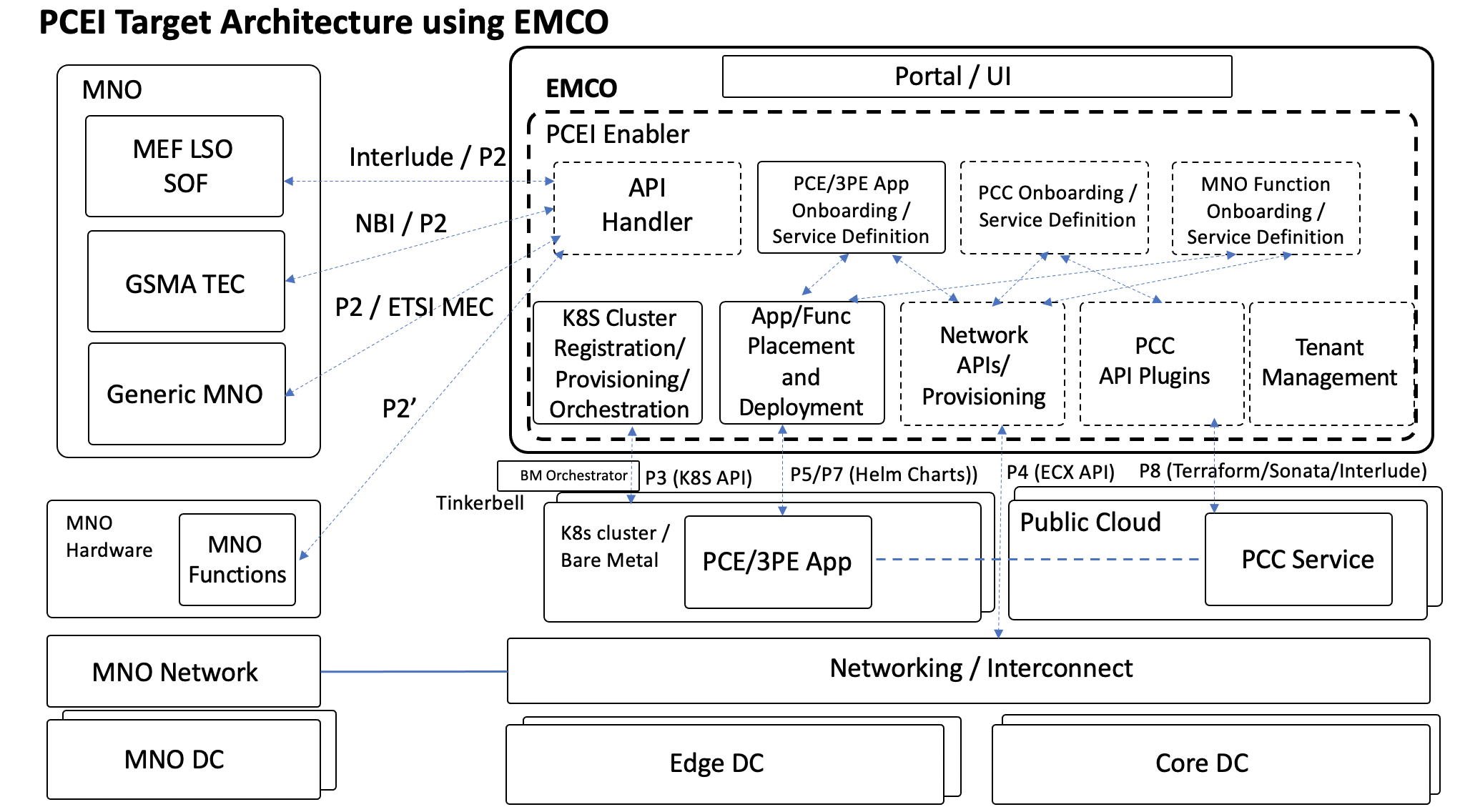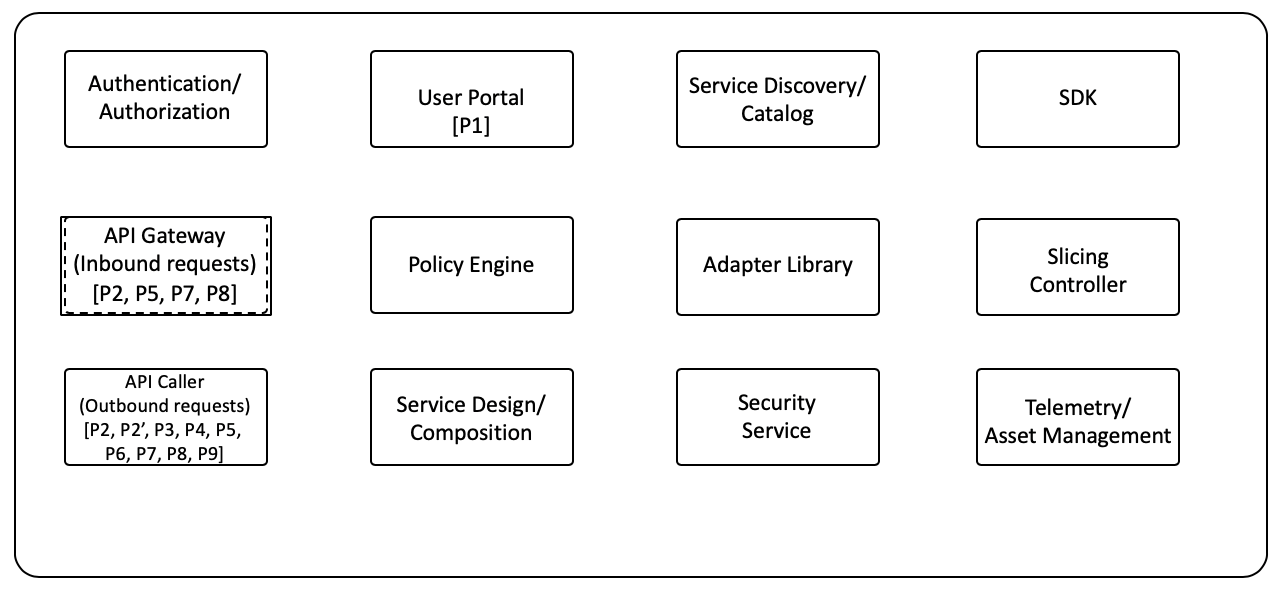...
Public Cloud Service Providers and 3rd-Party MEC Providers are deploying Edge instances to better serve their end-users and applications, A multitude of these applications require close inter-working with the MNO Edge deployments to provide predictable latency & throughput, reliability, and other telco-grade requirements. The purpose of this blueprint family is to specify a standard set of APIs to expose towards Public Cloud and 3rd-Party MEC Service Provider instances at the Edge.
The need to interface and exchange information through these open APIs will allow competitive offerings for Consumers, Enterprises, and Vertical Industry end-user segments. For instance, open APIs will be provided between Telcos and public cloud edge compute platforms such as Google Cloud Platform (GCP) Anthos, AliCloud Edge Node Service (ENS), AWS Wavelength, Microsoft Azure Edge Zones, Tencent ECM, to name a few. These APIs are not limited to providing basic connectivity services but will include the ability to deliver predictable data rate, predictable latency, reliability, service insertion, security, AI and RAN analytics, network slicing, and more. These capabilities are needed to support a multitude of emerging applications such as AR/VR, Industrial IoT, autonomous vehicles, drones, Industry 4.0 initiatives, Smart Cities, Smart Ports. Other APIs will include exposure to edge orchestration and management, Edge monitoring (KPIs), and more. These open APIs will be the foundation for service and instrumentation APIs when integrating with public cloud development environments and will be defined as part of the implementation. Even though these APIs will be common across all Telco operators, the differentiation will based on services provided through those APIs.
...
The PCEI Reference Architecture and the Interface Reference Points (IRP) are shown in the figure figures below. Note this figure also provides a component layer view of the PCEI Architecture:
Figure 3a. The PCEI Summary Reference Architecture.
Figure 33b. The PCEI Detailed Reference Architecture.
The PCEI Reference Architecture layers are described below:
...
Software Platform Architecture
<Software components with version/release numbers >
<EDGE Interface>
<ETSI MEC Interaction>
PCEI Enabler is based on EMCO - Edge Multi-Cluster Orchestrator:
https://wiki.onap.org/pages/viewpage.action?pageId=84668166
The target software architecture The general structure of the PCEI Enabler based on EMCO is shown below:. Note that all references to specific APIs and SDOs are for mapping purposes only, subject to ongoing analysis and do not indicate compliance with APIs/SDO specs.
Figure 4. General structure of PCEI Enabler.
...



